Introduction – The Charging Debate in 2025
In 2025, smartphone technology is evolving faster than ever — and so are the ways we charge our devices. One of the hottest questions among users today is: wired vs wireless charging — which one is better? Both methods come with their own set of advantages, but they also raise important questions about speed, safety, efficiency, and convenience.
Wired charging has been around since the beginning of mobile phones. It’s fast, reliable, and well-supported across all devices. But with the rise of wireless technology, more users are now switching to cable-free charging pads and Qi-enabled smartphones for a cleaner, more modern experience.
However, the choice between wired vs wireless charging isn’t just about preference — it impacts your battery health, charging speed, electricity consumption, and even your daily routine. While one may offer convenience, the other may give you better performance.
In this blog, we’ll explore both charging methods in depth. You’ll learn how each one works, compare their real-world pros and cons, and find out which one is actually worth using in 2025. Whether you’re a tech enthusiast or an average smartphone user, this guide will help you make the smarter choice for your device and lifestyle.
What is Wired Charging?
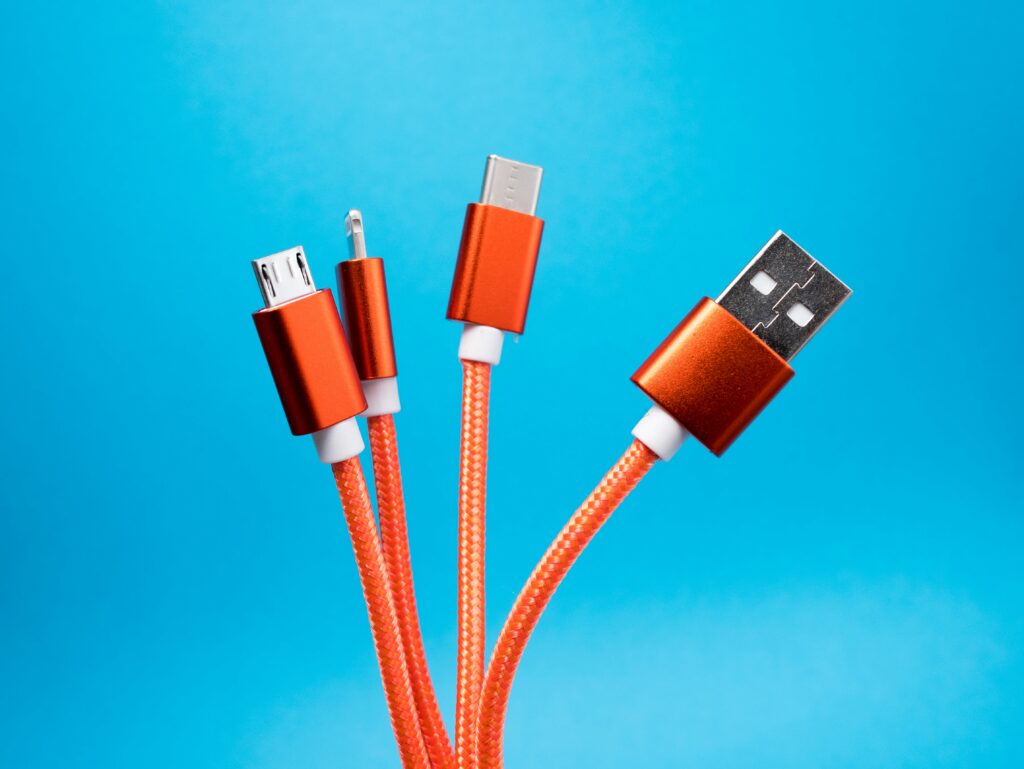
Wired charging is the traditional and most widely used method of powering electronic devices, especially smartphones, laptops, and tablets. It involves connecting your device directly to a power source using a physical cable, typically a USB-A, USB-C, or Lightning connector. The moment you plug your phone into the charger, electricity flows directly into the battery — offering a fast, stable, and consistent charge.
This method has been the standard since the first mobile phones were introduced. Over time, charging speeds have dramatically improved — from basic 5W adapters to today’s high-speed 100W+ fast chargers. Modern wired chargers can fill a phone battery from 0% to 100% in less than an hour, depending on the wattage and phone model.
Wired charging is generally more energy-efficient than wireless charging. There’s minimal energy loss during the transfer, and heat generation is relatively low, making it safer for long-term battery health — especially if you use original or certified chargers and cables.
Another major benefit is universality. Almost every phone, tablet, or gadget still comes with a wired charging port, which means compatibility issues are rare. Additionally, wired chargers are affordable, widely available, and portable — making them the go-to choice for most users.
In summary, wired charging remains the fastest, most reliable way to charge your device, especially when you’re short on time. Despite the rise of wireless alternatives, it’s hard to beat the sheer speed and stability of a good old-fashioned cable connection.
What is Wireless Charging?
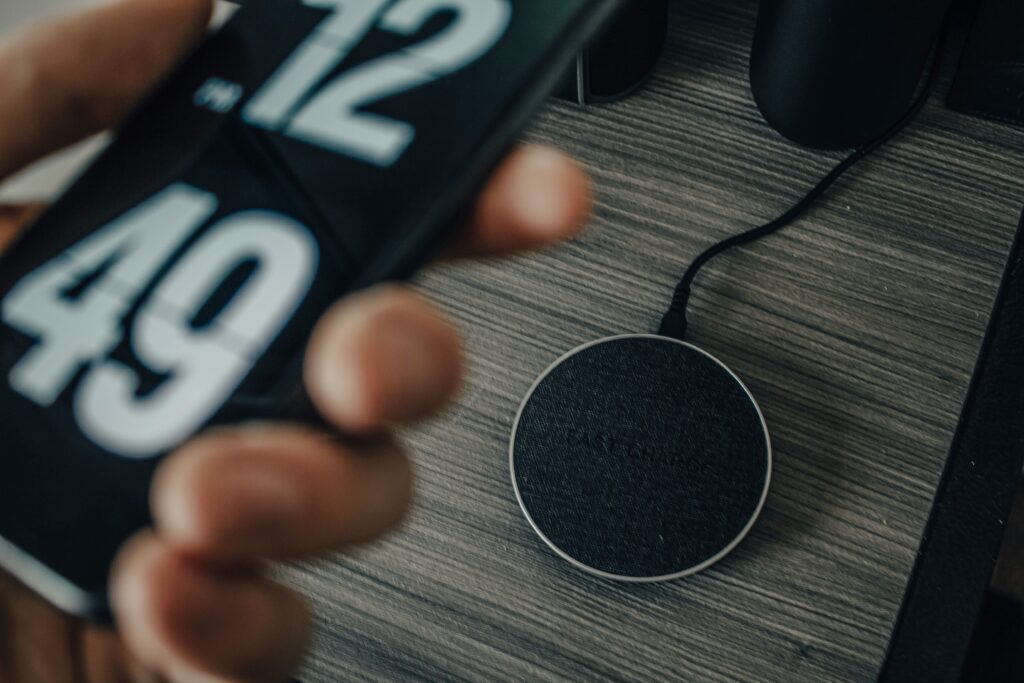
Wireless charging is a modern method of powering your smartphone or device without using any physical cables. Instead of plugging in, you simply place your phone on a charging pad or stand, and the power is transferred through electromagnetic induction. It feels futuristic — and for many users, it adds a clean, clutter-free experience.
Wireless charging works based on the Qi (pronounced “chee”) standard, which is widely supported by major smartphone brands like Apple, Samsung, Google, and Xiaomi. When your phone is placed on a Qi-compatible pad, a coil inside the pad generates an electromagnetic field. A matching coil inside your phone picks up this energy and converts it into battery power.
While the convenience is obvious — no cables, no ports wearing out — there are some trade-offs. Wireless charging is typically slower than wired charging, especially on older or budget phones. A regular 15W wireless charger might take up to 2–3 hours to fully charge your phone, while a wired fast charger can do it in less than an hour.
There’s also more energy loss involved, meaning some of the electricity is lost as heat during the transfer. This can make the phone warm, especially if you’re charging with a thick case or if the coils are misaligned.
Despite these limitations, wireless charging is steadily improving. Many newer phones support 20W to 50W wireless charging, and some brands even offer wireless reverse charging, allowing your phone to charge earbuds or other devices.
In short, wireless charging offers unmatched convenience, and while it’s not as fast or efficient as wired charging yet, it’s quickly becoming a standard feature in modern devices.
How Wired Charging Works – Speed & Tech
Wired charging delivers power directly to your device’s battery through a physical cable and adapter, making it the fastest and most efficient way to charge today. But how does it actually work?
At its core, wired charging involves transferring electrical energy from a wall socket to your phone via a cable. The charging adapter (or brick) converts high-voltage AC power from your home into lower-voltage DC power that your device can safely use. The USB cable then delivers this power directly to the phone’s charging port, where internal circuits manage the energy and feed it into the battery.
The speed of wired charging depends on three main factors:
- Voltage (V) and Current (A) – Together they determine wattage:
Power (W) = Voltage × Current
For example, a 5V/2A charger gives 10W, while a 20V/3.25A charger delivers 65W. - Fast Charging Protocols – These are smart systems that adjust power dynamically for safety and speed. Examples include:
- Qualcomm Quick Charge
- USB Power Delivery (USB-PD)
- SuperVOOC / Warp Charge / TurboCharge
- Cable Quality & Compatibility – A cheap or old cable can limit charging speed even if the adapter is powerful.
Wired charging is highly efficient, with minimal energy loss and better thermal control. That’s why it’s preferred for heavy users, gamers, and people who need to power up quickly.
Thanks to technology upgrades, modern wired charging can take your phone from 0% to 100% in less than 30 minutes in some models — something wireless charging still struggles to match.
How Wireless Charging Works – Explained Simply
Wireless charging may seem like magic, but it’s actually based on a technology called electromagnetic induction. Unlike wired charging, where power travels through a cable, wireless charging transfers energy between two coils — one in the charger and one in your device — without physical contact.
Here’s how it works:
A wireless charging pad (also called a charging dock or stand) contains a transmitter coil. When you plug the pad into a power source, it creates an electromagnetic field around that coil. When you place a Qi-enabled device on the pad, the receiver coil inside your phone picks up this field and converts it back into electric current, which charges your battery.
The entire process happens through magnetic resonance, meaning the charger and phone must be perfectly aligned. If they’re even slightly off, charging may slow down or stop. That’s why many users experience slower performance when charging through thick cases or misaligned pads.
Wireless charging typically offers 5W to 15W speeds, though newer models now support 20W, 30W, or even 50W wireless charging. However, energy loss is higher than wired charging — up to 20–30% can be lost as heat, which is why phones often feel warm during wireless charging.
Despite these challenges, wireless charging continues to improve. It’s perfect for overnight charging, office desks, or anyone who prefers a clutter-free setup without tangled cables.
In short, wireless charging is clean, convenient, and cable-free — though not yet a full replacement for the speed and efficiency of wired charging. Learn more about how Qi wireless charging works on the official Wireless Power Consortium site.
Speed Comparison – Wired vs Wireless Charging
When it comes to charging speed, wired charging still wins — by a huge margin. While wireless charging is catching up slowly, there’s a clear difference in how quickly each method powers up your device.
Let’s compare both in practical terms:
Wired Charging Speeds (2025)
- Standard chargers: 10W–18W (takes ~2–3 hours for full charge)
- Fast chargers: 30W–65W (takes ~45–60 minutes)
- Ultra-fast charging: 100W–240W (0% to 100% in under 30 minutes on some flagship models)
Wired charging benefits from direct contact, minimal energy loss, and support for high-power protocols like USB Power Delivery (PD), Quick Charge, and SuperVOOC.
Wireless Charging Speeds (2025)
- Standard wireless pads: 5W–10W (can take 3–4 hours)
- Fast wireless chargers: 15W–30W (1.5 to 2.5 hours)
- Flagship-only chargers: 50W+ (still slower than wired 65W+)
Wireless charging suffers from power loss through air, coil misalignment, and heat generation. Even at 30W, it’s not as consistent or reliable as a wired 30W charger.
Verdict: Wired is Still Faster
If speed is your top priority — whether for quick top-ups, gaming, or busy schedules — wired charging is the better choice. Wireless charging is improving, but it’s still best for casual, overnight, or desk-side charging.
Efficiency & Power Loss – Which One Wastes Less?
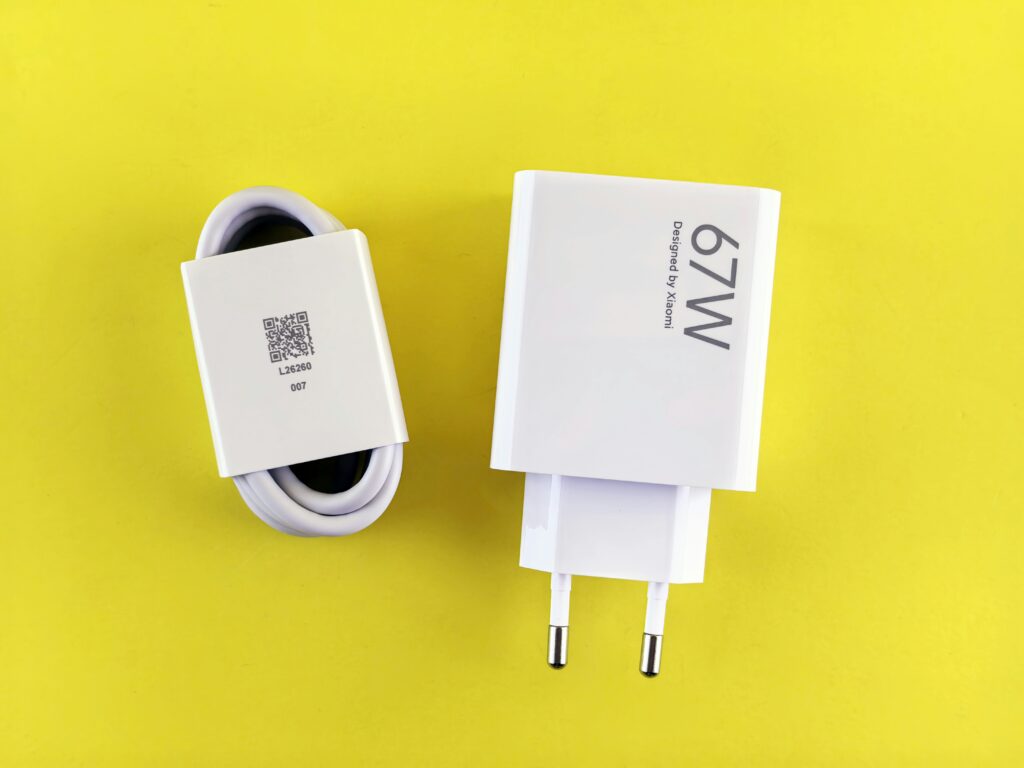
Charging isn’t just about speed — it’s also about how efficiently power is delivered to your device. In this case, wired vs wireless charging shows a clear difference when it comes to energy loss and overall power efficiency.
Wired Charging: High Efficiency, Minimal Loss
Wired charging is extremely efficient because the power travels directly through a cable from the charger to your device’s battery. There’s very little resistance and hardly any energy is lost during transfer — typically only 5–10% loss, depending on cable and charger quality.
This means more of the electricity you use is going directly into charging, making wired charging not only faster, but also less wasteful and more eco-friendly over time.
Wireless Charging: More Energy Lost as Heat
Wireless charging uses electromagnetic fields to transfer power between coils. However, during this process, a significant amount of energy is lost as heat — usually around 20–30%, and sometimes even more if the alignment isn’t perfect or if a phone case blocks the coil.
This heat not only reduces charging efficiency but can also impact battery health if the device becomes too warm frequently. Additionally, higher energy use means more electricity consumed overall for the same charge.
Verdict: Wired Charging Wastes Less Power
In terms of energy efficiency and environmental impact, wired charging is clearly the better option. If you care about saving power, charging faster, and protecting your battery from excess heat, wired is the way to go.
Impact on Battery Health – Long-Term Safety
Your phone’s battery isn’t just about how fast it charges — it’s also about how long it lasts. When comparing wired vs wireless charging, one of the most important factors to consider is their impact on battery health over time.
Wired Charging – Safe with the Right Setup
Wired charging, especially using certified adapters and cables, is generally safe for long-term battery life. It delivers power in a controlled, direct flow with less heat buildup, especially when using standard or slow charging modes (like 10W–18W). Fast charging can generate more heat, but most modern phones include thermal management systems to protect against overheating.
To protect battery life:
- Avoid using your phone while fast charging.
- Use original or certified chargers.
- Don’t charge to 100% all the time — 20% to 80% is ideal for battery health.
Wireless Charging – More Heat, More Wear
Wireless charging, while convenient, tends to generate more heat, especially if the phone is misaligned or if it’s being charged through a thick case. Heat is the number one enemy of lithium-ion batteries, and repeated exposure can cause faster battery degradation.
Even though wireless charging systems now include safety features, the constant temperature rise — even slight — can reduce your battery’s effective lifespan over time.
Verdict: Wired is Gentler on Battery Health
When done properly, wired charging is safer and more battery-friendly than wireless charging. If battery longevity is your priority, especially on expensive phones, wired charging is still the better long-term choice.
Convenience & Portability – Which is More User-Friendly?
When it comes to daily use, charging speed and battery health are important — but so is convenience. That’s why many users choose between wired vs wireless charging based on what feels more practical and hassle-free.
Wired Charging – Simple & Travel-Friendly
Wired charging is still the most practical and portable solution. All you need is a charger and cable — which are lightweight, compact, and easy to carry. Whether you’re traveling, commuting, or just charging at home, wired solutions work anywhere with a socket.
Plus, you can use wired chargers with power banks, laptops, or even car chargers — making them far more versatile in real-life situations.
However, the downside is cable clutter, and over time, cables and ports can wear out or break. Still, the overall convenience of plugging in and charging anywhere remains unmatched.
Wireless Charging – Clean, No Cables
Wireless charging offers a clutter-free experience. Just place your phone on the pad — no fumbling with cables or worn-out ports. It’s great for:
- Desks and bedside tables
- Office setups
- People who want minimalism
But wireless chargers are not very portable, often bulky, and still need to be plugged into a power source. Also, they can’t charge through metal cases, and if alignment is off, charging may fail.
Verdict: Wired is More Versatile; Wireless is More Comfortable (at home)
If you need portability and flexibility, wired charging wins. But if you value neat setups and easy charging without cables, wireless charging is more comfortable — especially in fixed locations like home or office.
Cost Comparison – Chargers, Accessories, Setup
When choosing between wired vs wireless charging, cost is a practical factor for many users. While both have upfront and long-term expenses, there’s a noticeable difference in accessory prices, availability, and overall value.
Wired Charging – Affordable & Widely Available
Wired charging is the most budget-friendly option. Even branded fast chargers are now priced reasonably:
- Standard wired charger (10W–18W): ₹300–₹700
- Fast wired charger (30W–65W): ₹800–₹2000
- High-speed USB-C cables: ₹200–₹600
In most cases, phones still include a charger in the box — especially budget or mid-range models. Even if you need to replace one, third-party certified options are cheap and easily available online or in stores.
Wireless Charging – Premium & Add-on Cost
Wireless charging accessories usually cost more, and are rarely included with smartphones:
- Standard wireless pad (5W–10W): ₹1000–₹2000
- Fast wireless charger (15W–30W): ₹2000–₹5000
- Flagship-grade 50W+ wireless pads: ₹5000+
- You may also need a power adapter separately, as many wireless chargers are sold without it.
On top of that, wireless chargers aren’t as widely available offline, and compatibility is limited to Qi-enabled devices only.
Verdict: Wired Charging is More Budget-Friendly
If you’re looking for an affordable, reliable, and easy-to-replace setup, wired charging is the clear winner. Wireless charging offers convenience, but at a premium — both in price and accessory requirements.
Which Phones & Devices Support Wireless Charging?
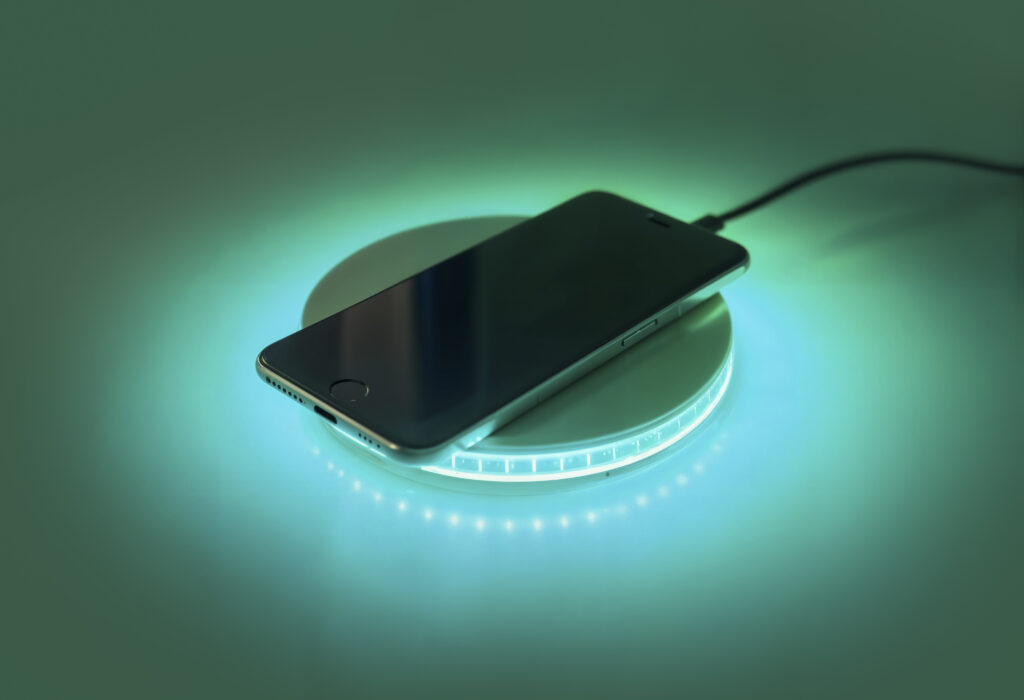
Before investing in a wireless charger, it’s important to know whether your device actually supports it. Unlike wired charging, which is universal across all phones, wireless charging is only available on select smartphones and gadgets that come with built-in Qi wireless charging compatibility.
Smartphones That Support Wireless Charging (2025)
Most flagship and upper mid-range phones from major brands now offer wireless charging, including:
- Apple iPhones: iPhone 8 and above (including iPhone SE 2nd Gen+) support Qi wireless charging. Newer models also support MagSafe.
- Samsung Galaxy series: Galaxy S10 and above, Galaxy Note 10/20 series, Z Fold and Flip series.
- Google Pixel: Pixel 5 and above support wireless charging.
- OnePlus: OnePlus 9 Pro, 10 Pro, 11, and 12 support fast wireless charging (30W–50W).
- Xiaomi/Redmi: Xiaomi 12 Pro, 13 Ultra, and select models offer 50W+ wireless charging.
- Nothing Phone (1 & 2) – both support wireless and reverse wireless charging.
- Motorola Edge+ and Razr series also support wireless charging.
Note: Many budget and mid-range phones (under ₹20,000–25,000) do not include wireless charging.
Other Wireless Charging Devices
- TWS Earbuds: Like AirPods Pro, Galaxy Buds, and Nothing Ear (2) with wireless charging cases.
- Smartwatches: Apple Watch, Samsung Galaxy Watch, Pixel Watch, and others use proprietary wireless charging.
- Power Banks: Some models offer wireless output to charge phones on the go.
Final Tip:
Always check your device’s specifications or manufacturer’s website before buying a wireless charger. Not all phones support it, and some use brand-specific formats like MagSafe or reverse wireless.
Pros & Cons of Wired Charging
Despite the growing popularity of wireless charging, wired charging remains the most reliable and widely used method. Let’s look at the key advantages and disadvantages of wired charging to help you decide if it’s right for your daily use.
Pros of Wired Charging
- Faster Charging Speeds
Wired charging supports higher wattage, enabling fast charging speeds up to 240W on the latest smartphones. Many devices can go from 0% to 100% in under 30 minutes. - Higher Efficiency
Wired charging delivers more power with less energy loss, making it more efficient and environmentally friendly than wireless options. - Wider Compatibility
Works with almost all devices — from smartphones and tablets to laptops, power banks, cameras, and more. - Affordable and Easy to Replace
USB cables and adapters are cheap, widely available, and often included in the box. - Safe for Battery Health (if used properly)
With the right charger, wired charging generates less heat and supports better long-term battery life.
Cons of Wired Charging
- Cable Clutter
Carrying and managing cables can feel messy, especially with multiple devices. - Wear and Tear
Repeated plugging/unplugging can damage the charging port or cable over time. - Limited Freedom While Charging
Using your phone while charging is possible but restricted by cable length.
Pros & Cons of Wireless Charging
Wireless charging is all about convenience and modern minimalism — but like any tech, it comes with both strengths and drawbacks. Here’s a detailed look at the pros and cons of wireless charging to help you decide whether it’s the right choice for your daily needs.
Pros of Wireless Charging
- Cable-Free Convenience
Just drop your phone on the charging pad — no need to plug or unplug cables every time. - Less Wear on Charging Ports
Since you’re not using the charging port frequently, you avoid physical damage over time. - Cleaner Setup
Wireless chargers give your desk or bedside a neat and minimal look, reducing clutter. - Built-in Safety Features
Most wireless chargers stop power delivery when the phone is fully charged or misaligned, reducing overcharging risks. - Reverse Wireless Charging (on some phones)
Certain flagships allow your phone to wirelessly charge other devices like earbuds or smartwatches.
Cons of Wireless Charging
- Slower Charging Speeds
Even with 30W–50W pads, wireless charging is usually slower than wired charging — especially for full charges. - Less Energy Efficient
Around 20–30% of power is lost during the transfer, mostly as heat. - Not Ideal for Use During Charging
It’s hard to use your phone while it’s lying flat on a pad. - Requires Perfect Alignment
Misaligned coils or thick phone cases can cause charging to stop or slow down. - More Expensive Setup
Wireless chargers usually cost more and may not include power adapters.
When to Use Wired vs Wireless Charging?
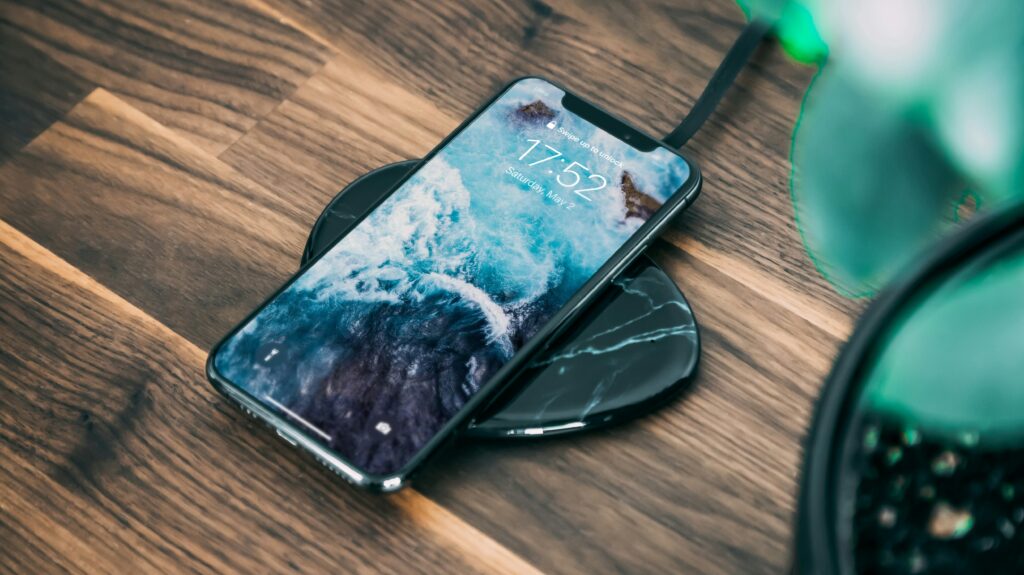
Both wired and wireless charging have their pros and cons. In 2025, the best approach is to understand when to use each method based on your actual usage needs. Here’s a practical breakdown to help you decide.
Use Wired Charging When:
- You need fast charging
If your phone is low on battery and you’re in a rush, a wired fast charger (30W–100W) is your best option. It can charge 50% in as little as 15 to 30 minutes. - You’re gaming or using heavy apps
Wired charging handles power-hungry tasks better and keeps the device cooler under load. - You’re traveling or commuting
Wired chargers are compact, portable, and compatible with power banks, car chargers, and wall sockets. - Battery health matters
Wired charging typically generates less heat and is more efficient, which helps extend battery life when done properly.
Use Wireless Charging When:
- You’re at your desk or bedside
Placing your phone on a pad is easier than plugging it in, making wireless ideal for stationary spots like nightstands or work desks. - You prefer a clean, minimal setup
Wireless charging helps avoid tangled cables and keeps your space tidy. - You’re charging slowly or overnight
If you’re not in a rush, wireless charging is a relaxed and safe option for overnight top-ups. - Your device supports reverse wireless charging
Some premium phones let you charge accessories like earbuds or smartwatches wirelessly on the back of the phone.
Final Verdict – Which One Should You Prefer in 2025?
In 2025, both wired and wireless charging have their own advantages depending on how you use your device. Wired charging remains unmatched in terms of speed, efficiency, cost, and battery safety. It’s ideal for users who want quick power-ups, reliable performance, and flexibility while traveling or gaming.
On the other hand, wireless charging is all about convenience. It offers a clean and hassle-free experience, especially when used at a desk, bedside, or in fixed locations. It’s not meant to replace wired charging completely, but it does add value for those who prefer a minimalist setup and slower, overnight charging.
If you rely heavily on your phone throughout the day or need fast top-ups in short timeframes, wired charging is the clear winner. But if you’re someone who values comfort and simplicity, wireless charging is a great secondary option to have.
Ultimately, the smart choice is to use both — wired charging when you need speed and wireless charging when you want ease. By understanding when and how to use each method, you can extend battery life, improve efficiency, and enjoy a more seamless charging experience in your daily routine.
Also Read: Fast Charging vs Normal Charging – The Ultimate Choice 2025
Frequently Asked Questions (FAQ)
Q1. Is wireless charging slower than wired charging?
Yes. Wireless charging is generally slower than wired charging, especially compared to fast wired chargers that offer 30W to 100W or more. Most wireless chargers range between 5W to 30W.
Q2. Does wireless charging damage the battery more than wired?
Wireless charging can generate more heat, which may slightly impact battery health over time. However, both methods are safe if used with certified chargers and proper alignment.
Q3. Can I use both wired and wireless charging on the same phone?
Yes. If your phone supports wireless charging, you can use either method depending on convenience. Switching between them doesn’t harm your battery.
Q4. What phones support wireless charging in 2025?
Most flagship and upper mid-range phones from brands like Apple, Samsung, Google, OnePlus, and Xiaomi now support wireless charging. Budget models usually do not.
Q5. Which is more energy-efficient — wired or wireless charging?
Wired charging is more efficient, with less energy lost as heat. Wireless charging typically loses 20–30% of power during transfer, making it less energy-friendly.
Q6. Is it okay to leave my phone on a wireless charger overnight?
Yes, but ensure you’re using a quality charger with overcharge protection. Keep the phone aligned and avoid charging through thick cases to reduce heat.
Q7. Can I charge my phone wirelessly with the case on?
Yes, but only if the case is not too thick or made of metal. Rubber, silicone, or thin plastic cases usually work fine.
A tech-driven content strategist with 6+ years of experience in crafting high-impact digital content. Passionate about technology since childhood and always eager to learn, focused on turning complex ideas into clear, valuable content that educates and inspires.
